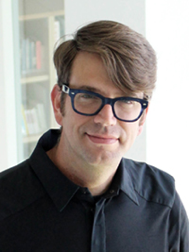James Stevens

XXXII Cycle - (A.A. 2016-2017)
IDAUP
Home Institution: Polis University Tirana
Scholarship (bound research topic)
Curriculum: Architecture (ICAR13)
Research Topic: Digital Craft and Tectonics
Tutor DA-UNIFE: Theo Zaffagnini
Tutor Polis University: Antonino di Raimo
Nationality: American
Email: jstevens@ltu.edu
Profile
Biography
James C. Stevens is an Associate Professor and Chair of the Department of Architecture at Lawrence Technological University, where he is the founding and acting Director of makeLab, a digital fabrication and design studio. James is coauthor of the book Digital Vernacular, Architectural Principles, Tools and Processes (Routledge 2015). He is a Licensed Architect in the State of Michigan, USA and certified by the National Council of Architecture Registration Boards (NCARB). He is the recipient of the AIA Henry Adams Medal for Excellence in the Study of Architecture and was the 2016 Fulbright Scholar in Albania. He holds a Master of Architecture degree from North Carolina State University (M.Arch. 2007) and a Bachelor in Fine Arts degree from The Savannah College of Art and Design (BFA 1994). He is currently a PhD candidate at the University of Ferrara, Italy at the Polis University campus in Tirana, Albania were his research focuses on Digital fabrication, digital craft and tectonics.
Research skills
Design | Digital | Fabrication | Parametric | Craft
Scientific activities
ORCID ID:
0000-0000-0000-0000
IRIS UNIFE ID:
rp00000
Doctoral research
Digital Tectonics: Evolving Architectural Craft and Tectonics with Digital Tools
The proposed thesis plays a role in establishing new understanding and new knowledge in the evolution of traditional craft and historic tectonic conditions with digital tools – digital tectonics. This is being accomplished by a comprehensive study of relevant publications and precedents. The literature review has prompted a typological study of digital tectonic conditions leading to the proposition of a design project titled “digital risk”. This project is giving focus to the research by providing insights into the role of digital control and risk and how this influences digital making and digital tectonics. The current experiment is being conducted using ceramic additive technology and human coordinated ‘risk’ factors. This involves the design, fabrication and use of a large format delta 3D printer controlled using digital numeric G-code while the clay mix and extrusion is controlled by the craftsperson. The resulting data hopes to provide insights in how architects and designers can use managed risk when paired with digital making.
Keywords
Digital | Techtronic | Fabrication | Risk | 3D printing

